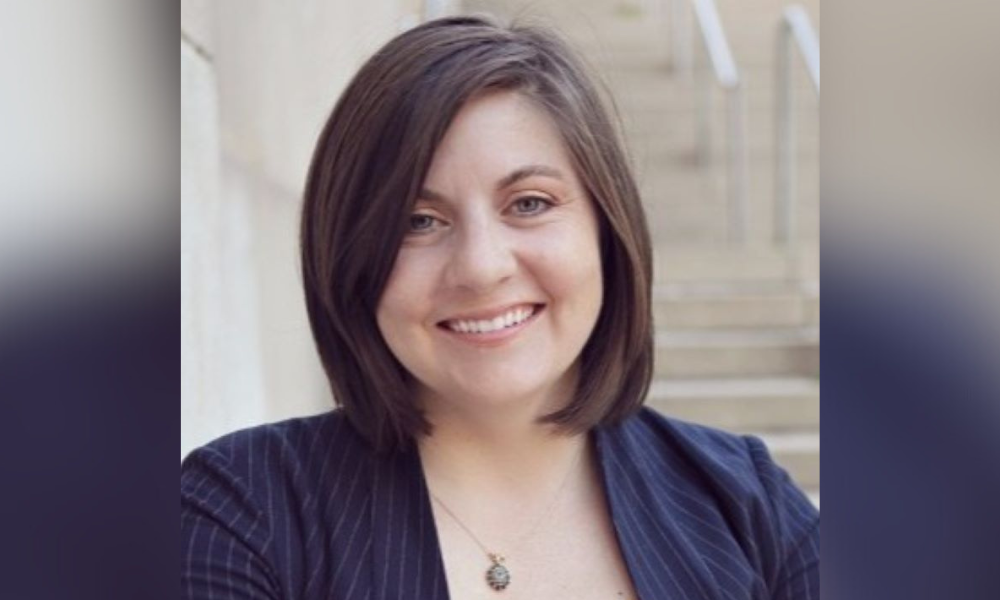"Common as possible, different as necessary"

“Common as possible, different as necessary” | Insurance Business America
Technology
“Common as possible, different as necessary”
Balancing customized challenges in emerging insurtech
Technology
By
Emily Douglas
With a keen interest in AI and machine learning, Lauren Finnis (pictured), of WTW, is excited about the impact new tech could have on the sector – however, she also warns against rushing in head first without having your data in place.
As a speaker at the upcoming Women in Insurance Chicago event, Finnis leads the North American commercial lines practice for WTW’s Insurance Consulting and Technology group, which both licenses and deploys technology as well as providing advisory services – all the while keeping an eye on generative AI.
“I spent a lot of time talking about AI because it’s in the zeitgeist,” she told IB. “It’s what everybody is worried or excited about. I think there’s plenty of [opportunities] that we see for insurers with AI. However, there’s so much more work that carriers and insurers need to do on their data and their data strategy.”
One area where Finnis sees untapped potential is in robotic process automation (RPA), which she describes as “perhaps narrow AI, not Gen AI.” RPA, primarily leveraging machine learning, can automate mundane, manual tasks— a critical step before the full capabilities of generative AI can be harnessed.
“It’s bad enough that you have to wait for the regulator,” said Finnis. “The second you’re ready from the regulator, you want to go – and so we’ve been working with insurers on transforming the [rate change] process and externalizing [rating] from the policy admin system. [So] once you make a decision, you deploy that decision.”
But it’s not all smooth sailing for the sector, even with AI’s guiding hand. One of the more significant hurdles in the field, as Finnis explained, is the diversity and specialization inherent in commercial insurance lines. Unlike personal lines, which are largely homogenous, commercial insurance demands a nuanced approach.
“The commercial lines are not homogenous, and people generally think that everything needs a specialized approach,” added Finnis. “We often see companies where the product lines alone end up being little fiefdoms. That’s what we’re trying to do – transformation and automation and modernization. It’s not just convincing one person, it’s convincing multiple people and trying to come up with a process that multiple stakeholder groups can kind of get on board with.”
This requires a delicate balance of standardization and customization—or CAPDAN – ‘common as possible, different as necessary’. But, despite these challenges on the horizon, Finnis is optimistic about the opportunities emerging from technological advancements.
“The technology is speeding up really quickly,” she told IB. “I recently presented at the Casualty Actuarial Society’s Ratemaking, Product and Modeling Seminar where we were talking about the underwriter of the future. To do so we went through the decades – the 80s, 90s and today. We looked at the way in which the job of the underwriter has changed – it didn’t change that much in the 80s, 90s, early 2000s – but now it’s rapidly changing.”
But this drive for adaptation leads to significant opportunities for consulting firms that can bridge the gap between old practices and new technologies. Finnis’s team at WTW specializes in capabilities benchmarking and best practice reviews, essential services that help companies chart a roadmap through the complexities of modern insurance markets.
“Capabilities benchmarking and best practice reviews lead to technology and change,” she said. “Before carriers embark on such changes, they need support in charting roadmaps and prioritizing – because there’s so much happening. Once they want to make those changes, there are very few consulting groups out there – the niche that we fall into is at the intersection of the technology and industry expertise. As such, we have people in our practice that have been on the carrier side and we also have that deep technical knowledge.”
This combination allows WTW to offer specialized services that are finely attuned to the needs of the insurance industry. And this depth of knowledge is crucial in a sector as intricate as insurance, where explaining the nuances to those outside the industry can often result in confusion.
“Our technology is built by industry experts,” she told IB. “Insurance is a highly specialized industry. We all try to explain it to our friends and families and loved ones and get the question mark stare; it’s not straightforward. So it does need specialized service.”
Related Stories
Keep up with the latest news and events
Join our mailing list, it’s free!






